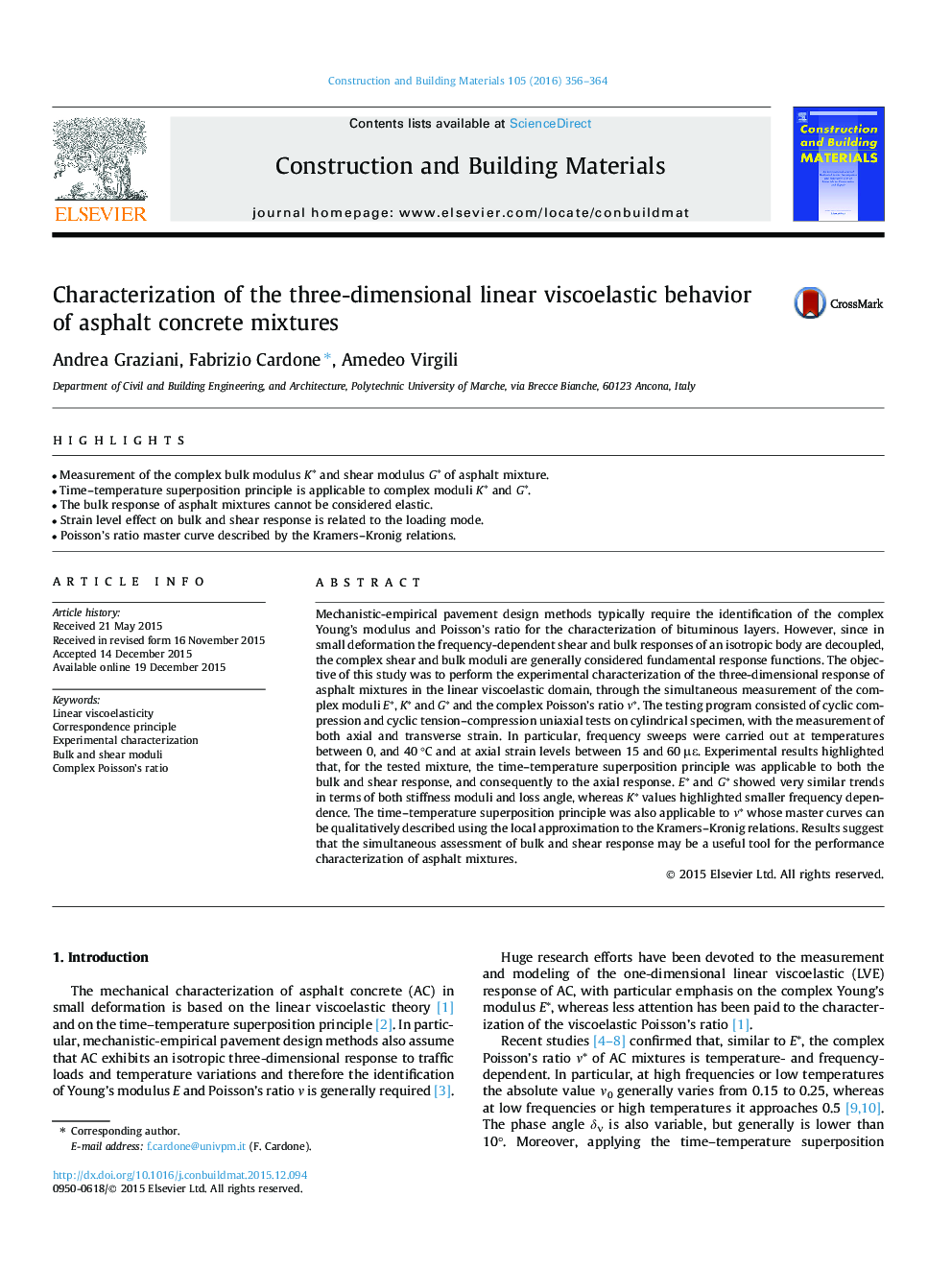| Article ID | Journal | Published Year | Pages | File Type |
|---|---|---|---|---|
| 6719631 | Construction and Building Materials | 2016 | 9 Pages |
Abstract
Mechanistic-empirical pavement design methods typically require the identification of the complex Young's modulus and Poisson's ratio for the characterization of bituminous layers. However, since in small deformation the frequency-dependent shear and bulk responses of an isotropic body are decoupled, the complex shear and bulk moduli are generally considered fundamental response functions. The objective of this study was to perform the experimental characterization of the three-dimensional response of asphalt mixtures in the linear viscoelastic domain, through the simultaneous measurement of the complex moduli Eâ, Kâ and Gâ and the complex Poisson's ratio νâ. The testing program consisted of cyclic compression and cyclic tension-compression uniaxial tests on cylindrical specimen, with the measurement of both axial and transverse strain. In particular, frequency sweeps were carried out at temperatures between 0, and 40 °C and at axial strain levels between 15 and 60 με. Experimental results highlighted that, for the tested mixture, the time-temperature superposition principle was applicable to both the bulk and shear response, and consequently to the axial response. Eâ and Gâ showed very similar trends in terms of both stiffness moduli and loss angle, whereas Kâ values highlighted smaller frequency dependence. The time-temperature superposition principle was also applicable to νâ whose master curves can be qualitatively described using the local approximation to the Kramers-Kronig relations. Results suggest that the simultaneous assessment of bulk and shear response may be a useful tool for the performance characterization of asphalt mixtures.
Related Topics
Physical Sciences and Engineering
Engineering
Civil and Structural Engineering
Authors
Andrea Graziani, Fabrizio Cardone, Amedeo Virgili,
